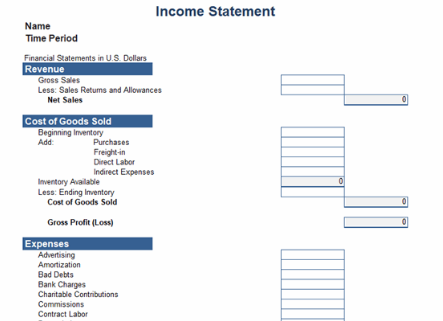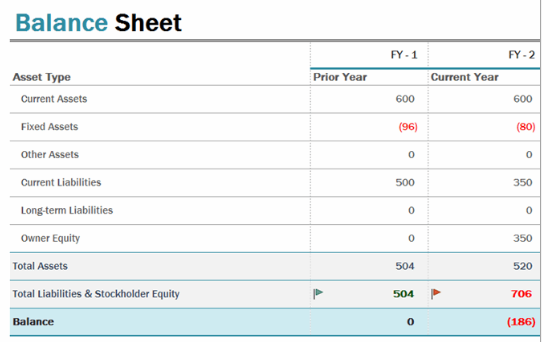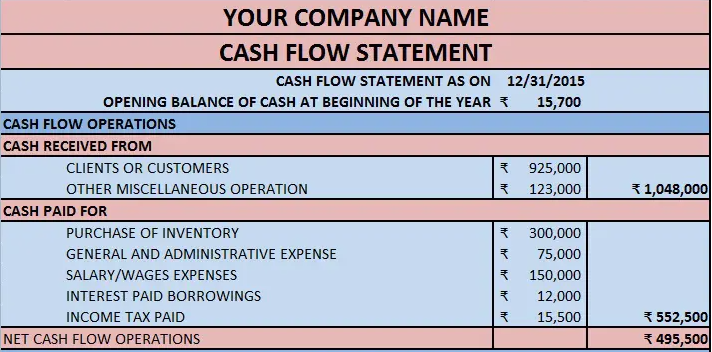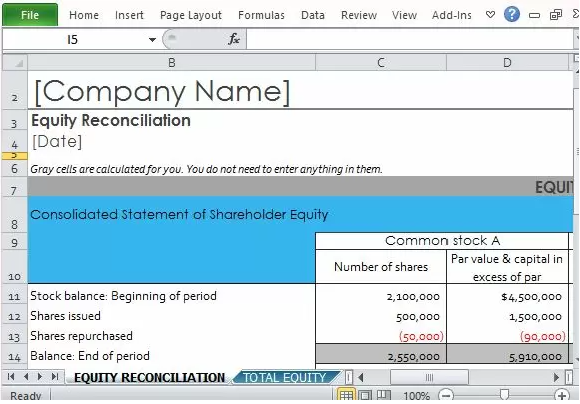The humble financial statement. It’s never been more important for business owners to learn how to create and track one. Not only does the statement record critical financial data within a set period, but it has the potential to identify trends, potential opportunities, and lingering threats before they affect your bottom line.
But for the small startup or growing ecommerce brand, financial statements can seem extremely daunting. What are financial statements in the first place, and how are they supposed to be created and used in an ecommerce setting?
Thankfully, the conversations surrounding financial statements sound a lot more complicated than they really are. Let’s explore the many different types of financial statements, as well as their benefits and the tools available to create one for yourself.

Start selling online now with Shopify



What is a financial statement?
A financial statement is a type of accounting document that details sensitive financial information in an easy-to-understand way. Any activities related to your income, expenses, or cash flow are recorded in a spreadsheet, chart, or similarly visualized report.
In the ecommerce industry, there are many types of people who may be responsible for financial statements. Very small brands may delegate this process to the owner, while larger companies may rely on CPAs or accountants to get the job done. Other businesses may have outsourced professionals or freelancers who specialize solely in financial statements.
It’s strongly encouraged to have your financial statements completed on a regular basis. Lending institutions and investors will request these financial documents to get an idea of your financial standing.
The benefits of financial statements

Creating a financial statement benefits businesses of any size—from upstart companies to growing enterprises. These financial documents will clearly and succinctly detail information that is used to spur action, whether it shows dropping profits or highlights clear growth indicators. They are instrumental in protecting your brand from abject failure, keeping you informed about everything that might be impacting your business (and potentially where problems are coming from).
The use of financial statements for your business may also help you to:
- Get money from a third party. Well-kept financial statements prove whether or not your company is worthy of investor attention, crowdsourced funding, or bank loans.
- Stay within tax compliance. The stress of an audit on your business may be lessened by accurate, timely financial statements that correspond to any pressing questions.
- Forecast and plan for the future. Knowing what your profits have been for the past few years may help you to identify busy seasons or product trends that will be more profitable in the future.
Depending on the size and scope of your business, financial statements may be used to craft annual reports. These provide a bird’s-eye view of your company’s yearly profits, which may or may not be necessary to prepare for next year. If you are a publicly owned company, you are required by law to provide shareholders with certain annual financial statements.
Four major types of financial statements
There are quite literally thousands of different financial statements used in the modern world. However, only three are generally used for private companies, plus an additional one for publicly traded organizations.
According to the SEC, these are income statements, balance sheets, cash flow statements, and equity statements. Let’s explore each of these in greater detail.
Income statement
An income statement is a type of financial statement that calculates your total income for a given period. This is done by subtracting your expenses and overhead from your gross profits, as seen in this example:

Income statements are typically completed at monthly, quarterly, or yearly intervals. But it’s not a bad idea to complete them once a month to have the best possible idea of your business growth.
Keep in mind that the income statement should be the first financial report completed in a given period. The information it provides will serve as the basis for all other reports.
Balance sheet
A balance sheet is a financial report used to measure the actual value of your company. The document will “balance” the income and expenses of your company by comparing business assets (items, vehicles, profits, etc.) to your liabilities (debts, taxes, equities). If the number is still in the green, the actual value of your business is positive. If not, your business may be held back by its debts.
A typical small business balance sheet may look something like this:

The more your business is positively valued, the more attention it will get from banks, lenders, and stakeholders. As you track your assets and liabilities over time, you can start to get a clearer picture of upcoming financial opportunities.
Cash flow statement
More than 82% of businesses fail because of poor cash flow management skills. Relying on a cash flow financial statement helps avert a part of this crisis, supplying the information you need to make objective and clear decisions.
The average small business cash flow statement doesn’t have to be complicated, as evidenced by this example template:

Done right, these cash flow statements accurately depict the amount of money moving to and from your specific brand. This lets you make objective decisions regarding expenses to cut and income to leverage—leading to bigger profits in the next quarter.
Shareholders’ equity statement
If you are a publicly traded company, you will need to make a shareholders’ equity statement. The purpose of this statement is to inform shareholders about the changing value of your brand. Similar to the balance sheet, positive equity shows excellent health and strong growth—something shareholders are extremely keen to monitor.
Here’s an example of what a shareholders’ equity statement might look like for your business:

Keep in mind that some brands choose to build shareholders’ equity statements into their balance sheet rather than create a whole new report. Again, this largely depends on the size of your business and its unique needs.
Tools to prepare financial statements
Ecommerce financial statements no longer need to be created with paper and pencil. In the age of technology, there are many different types of tools you could rely on to prepare your financial statements quickly, cleanly, and professionally.
- Microsoft Excel (or Google Sheets) is a great way to get started. You can download Shopify’s Financial Worksheet Template to get a head start or focus on other downloadable templates that make your life easier.
- Platforms like QuickBooks and FreshBooks allow you to keep a close eye on regular financial activity. However, keep in mind these platforms may not have everything you’re looking for—including the features and integrations.
- Visyond allows users to instantly generate cash flow statements, income statements, and balance sheets. But be warned: this is going to cost you.
If you still don’t feel comfortable creating financial statements on your own, know that partnering with a CPA or accountant in your area is also acceptable. Just be sure to choose an expert with the time, talent, and experience you need to succeed.
Optimize your financial statements over time
The truth is, anyone in the modern ecommerce industry has the ability to create financial statements. Armed with countless tools and resources, it’s easy to simply plug and play in order to create reports for internal and external teams.
Today, the real difficulty is found in optimizing said financial statements, or finding ways to leverage them for greater success. There’s a big difference between good and great, and a less-than-satisfactory financial statement has the potential to limit your business growth.
As your ecommerce brand continues to grow and mature, do what you can to:
- Simplify the process as much as possible with technology and tools
- Spot growth opportunities by mapping trends with visualized data
- Partner with a financial statement expert such as a CPA for help
The key to creating successful, accurate, and optimized financial statements is to constantly look for ways to improve. As your business continues to grow, lean heavily into your statements’ reporting process to discover new opportunities both now and in the future.
Financial statements FAQ
Why is a financial statement important?
Preparing a financial statement is important for tracking and understanding your company’s financial health. The statement also plays a vital role in managing taxes, dealing with audits, and securing external funding.
What are the four basic financial statements?
- Income statement
- Cash flow statement
- Balance sheet
- Shareholders’ equity statement
Can a bookkeeper prepare financial statements?
Yes, a bookkeeper is qualified to prepare financial statements. You can also use a CPA or prepare the financial statement yourself.

Start selling online now with Shopify



Want to learn more?
- 10-Step Formula to Achieve Financial Freedom in 2022
- How to Register a Business in the USA
- Business Plan Template: Guide for Ecommerce Businesses
- 10 Small Business Statistics You Need to Know in 2022





